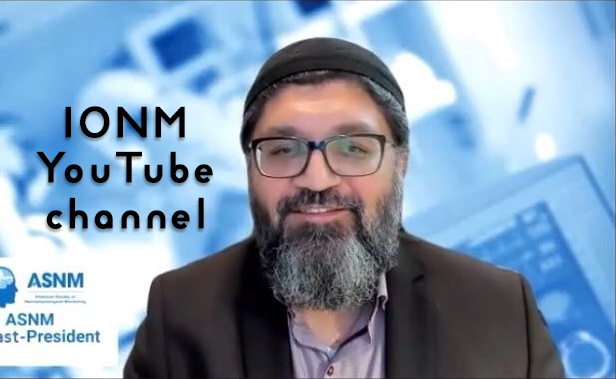EEG Variabilities in Diagnosis of Schizophrenia, Bipolar Disorder, and PTSD: A Literature Review
DOI:
https://doi.org/10.5281/zenodo.10214265Keywords:
eeg, ptsd, schizophrenia, bipolar disorders, psychiatryAbstract
Clinically significant disturbances in a person's cognition, emotional regulation, or behavior are the hallmarks of mental health disorders, which are debilitating psychiatric conditions. This review is being conducted to investigate whether the present literature regarding electroencephalography (EEG) patterns in individuals diagnosed with either schizophrenia, bipolar disorder (BD), or post-traumatic disorder (PTSD) show diagnostic biomarkers of the aforementioned mental health (MH) disorders. While the data from selected studies reported a relative level of variation, EEG activity and asymmetry were suggested in specific brain areas that potentially correlate with these MH disorders.
Mean synchronization in the alpha band decreased in BD patients, with the most significant decreases in fronto-central and centro-parietal connections. Furthermore, BD patients' clustering coefficient and global efficiency decreased, whereas the characteristic path length increased. Although the studies emphasizing the relationship between PTSD and EEG all pinpoint brain areas of increased activation in individuals diagnosed with PTSD, there is variation between specific areas of interest: the left frontal lobe, right frontal lobe, and the centro-parietal lobe. Despite the complexity of the MH disorder, abnormal EEG patterns found in schizophrenic patients have been shown across studies that demonstrate elevations of slow wave activity and deficits in alpha band frequency.
References
Kalin, Ned H. 2020. “Advances in Understanding and Treating Mood Disorders.” American Journal of Psychiatry 177 (8): 647–50. https://doi.org/10.1176/appi.ajp.2020.20060877.
Armitage, R. 2007. “Sleep and Circadian Rhythms in Mood Disorders.” Acta Psychiatrica Scandinavica 115 (s433): 104–15. https://doi.org/10.1111/j.1600-0447.2007.00968.x.
National Institute of Mental Health. (2019). Schizophrenia. Nih.gov; National Institute of Mental Health. https://www.nimh.nih.gov/health/topics/schizophrenia
Damborská, Alena, Camille Piguet, Jean-Michel Aubry, Alexandre G. Dayer, Christoph M. Michel, and Cristina Berchio. 2019. “Altered Electroencephalographic Resting-State Large-Scale Brain Network Dynamics in Euthymic Bipolar Disorder Patients.” Frontiers in Psychiatry 10 (November). https://doi.org/10.3389/fpsyt.2019.00826.
Atagün, Murat İlhan. 2016. “Brain Oscillations in Bipolar Disorder and Lithium-Induced Changes.” Neuropsychiatric Disease and Treatment 12 (589–601): 589. https://doi.org/10.2147/ndt.s100597.
Teplan, M., (2002). Fundamentals of EEG Measurement. Measurement Science Review 2(2), 1-10.
Kim, Sungkean, Yong-Wook Kim, Miseon Shim, Min Jin Jin, Chang-Hwan Im, and Seung-Hwan Lee. 2020. “Altered Cortical Functional Networks in Patients with Schizophrenia and Bipolar Disorder: A Resting-State Electroencephalographic Study.” Frontiers in Psychiatry 11 (July). https://doi.org/10.3389/fpsyt.2020.00661.
Kam, J. W. Y., Bolbecker, A. R., O’Donnell, B. F., Hetrick, W. P., & Brenner, C. A. (2013). Resting state EEG power and coherence abnormalities in bipolar disorder and schizophrenia. Journal of Psychiatric Research, 47(12), 1893–1901. https://doi.org/10.1016/j.jpsychires.2013.09.009
Sponheim, S.R Clementz, B.A., Iacono, W.G. and Beiser, M. (1994), Resting EEG in first-episode and chronic schizophrenia. Psychophysiology, 31: 37-43. https://doi.org/10.1111/j.1469-8986.1994.tb01023.x 0
Sponheim, S. R., Clementz, B. A., Iacono, W. G., & Beiser, M. (2000). Clinical and biological concomitants of resting state EEG power abnormalities in schizophrenia. Biological Psychiatry, 48(11), 1088–1097. https://doi.org/10.1016/s0006-3223(00)00907-
Kim, J. W., Lee, Y. S., Han, D. H., Min, K. J., Lee, J., & Lee, K. (2015). Diagnostic utility of quantitative EEG in un-medicated schizophrenia. Neuroscience Letters, 589, 126–131. https://doi.org/10.1016/j.neulet.2014.12.064
Donati, F. L., Fecchio, M., Maestri, D., Cornali, M., Derchi, C. C., Casetta, C., Zalaffi, M., Sinigaglia, C., Sarasso, S., & D’Agostino, A. (2021). Reduced readiness potential and post-movement beta synchronization reflect self-disorders in early course schizophrenia. Scientific Reports, 11(1). https://doi.org/10.1038/s41598-021-94356-5.
Takahashi, T., Cho, R. Y., Mizuno, T., Kikuchi, M., Murata, T., Takahashi, K., & Wada, Y. (2010). Antipsychotics reverse abnormal EEG complexity in drug-naive schizophrenia: A multiscale entropy analysis. NeuroImage, 51(1), 173–182. https://doi.org/10.1016/j.neuroimage.2010.02.009
Shor, O., Glik, A., Yaniv-Rosenfeld, A., Valevski, A., Weizman, A., Khrennikov, A., & Benninger, F. (2021). Eeg p-adic quantum potential accurately identifies depression, schizophrenia and cognitive decline. PLOS ONE, 16(8). https://doi.org/10.1371/journal.pone.0255529
Taylor, J. A., Larsen, K. M., Dzafic, I., & Garrido, M. I. (2021). Predicting subclinical psychotic-like experiences on a continuum using machine learning. NeuroImage, 241, 118329. https://doi.org/10.1016/j.neuroimage.2021.118329
Jin Kim, Dae, Amanda R Bolbecker, Josselyn Howell, Olga Rass, Olaf Sporns, William P. Hetrick, Alan Breier, and Brian F O’Donnell. 2013. “Disturbed Resting State EEG Synchronization in Bipolar Disorder: A Graph-Theoretic Analysis.” NeuroImage: Clinical 2 (414–423.): 414–23. https://doi.org/10.1016/j.nicl.2013.03.007.
Rahmani, Bahareh, Chung Ki Wong, Payam Norouzzadeh, Jerzy Bodurka, and Brett McKinney. “Dynamical Hurst Analysis Identifies EEG Channel Differences between PTSD and Healthy Controls.” PLOS ONE. Public Library of
Zoteva, Vadim, Raquel Phillipsa, Masaya Misakia, Chung Ki KiWonga, Brent E Wurfel, Frank Krueger, Matthew Feldner, and Jerzy Bodurka. “Real-Time Fmri Neurofeedback Training of the Amygdala Activity with Simultaneous EEG in Veterans with Combat-Related PTSD.” NeuroImage: Clinical. Elsevier, April 8, 2018. https://www.sciencedirect.com/science/article/pii/S2213158218301190#f0005.
Lobo, Isabela, Liana Catarina Portugal, Ivan Figueria, Eliane Volchan, and Isabel David. “EEG Correlates of the Severity of Posttraumatic Stress Symptoms: A Systematic Review of the Dimensional PTSD Literature.” Journal of Affective Disorders. Elsevier, May 15, 2015. https://www.sciencedirect.com/science/article/abs/pii/S0165032715003158?via%3Dihub.
Butt, Mamona, Elizabeth Espinal, Robin L. Aupperle, Valentina Nikulina, and Jennifer L. Stewart. “The Electrical Aftermath: Brain Signals of Posttraumatic Stress Disorder Filtered through a Clinical Lens.” Frontiers. Frontiers, May 13, 2019. https://www.frontiersin.org/articles/10.3389/fpsyt.2019.00368/full.
Meyer, Thomas, Conny Quaedflieg, Kim Weijland, Koen Schruers, Harald Merckelbach, and Tom Smeets. “Frontal EEG Asymmetry during Symptom Provocation Predicts Subjective Responses to Intrusions in Survivors with and without PTSD.” Psychophysiology. U.S. National Library
Wang, Chao, Sridhar Ramakrishnan, Srinivas Laxminarayan, Andrey Dovzhenok, J David Cashmere, Anne Germain, and Jaques Reifman. “An Attempt to Identify Reproducible High-Density EEG Markers of PTSD during Sleep.” Academic.oup.com. Accessed December 1, 2022. https://academic.oup.com/sleep/article/43/1/zsz207/5573662.
Jalili, M., & Knyazeva, M. G. (2011). EEG-based functional networks in schizophrenia. Computers in biology and medicine, 41(12), 1178–1186. https://doi.org/10.1016/j.compbiomed.2011.05.004.
Butt, Mamona, Elizabeth Espinal, Robin L. Aupperle, Valentina Nikulina, and Jennifer L. Stewart. “The Electrical Aftermath: Brain Signals of Posttraumatic Stress Disorder Filtered through a Clinical Lens.” Frontiers. Frontiers, May 13, 2019. https://www.frontiersin.org/articles/10.3389/fpsyt.2019.00368/full.
Verweij, Ilse M, Nico Romeijn, Dirk JA Smit, Giovanni Piantoni, Eus JW Van Someren, and Ysbrand D van der Werf. “Sleep Deprivation Leads to a Loss of Functional Connectivity in Frontal Brain Regions - BMC Neuroscience.” BioMed Central. BioMed Central, July 19, 2014. https://bmcneurosci.biomedcentral.com/articles/10.1186/1471-2202-15-88.
Downloads
Published
How to Cite
Issue
Section
License
Copyright (c) 2023 J of Neurophysiological Monitoring

This work is licensed under a Creative Commons Attribution 4.0 International License.





